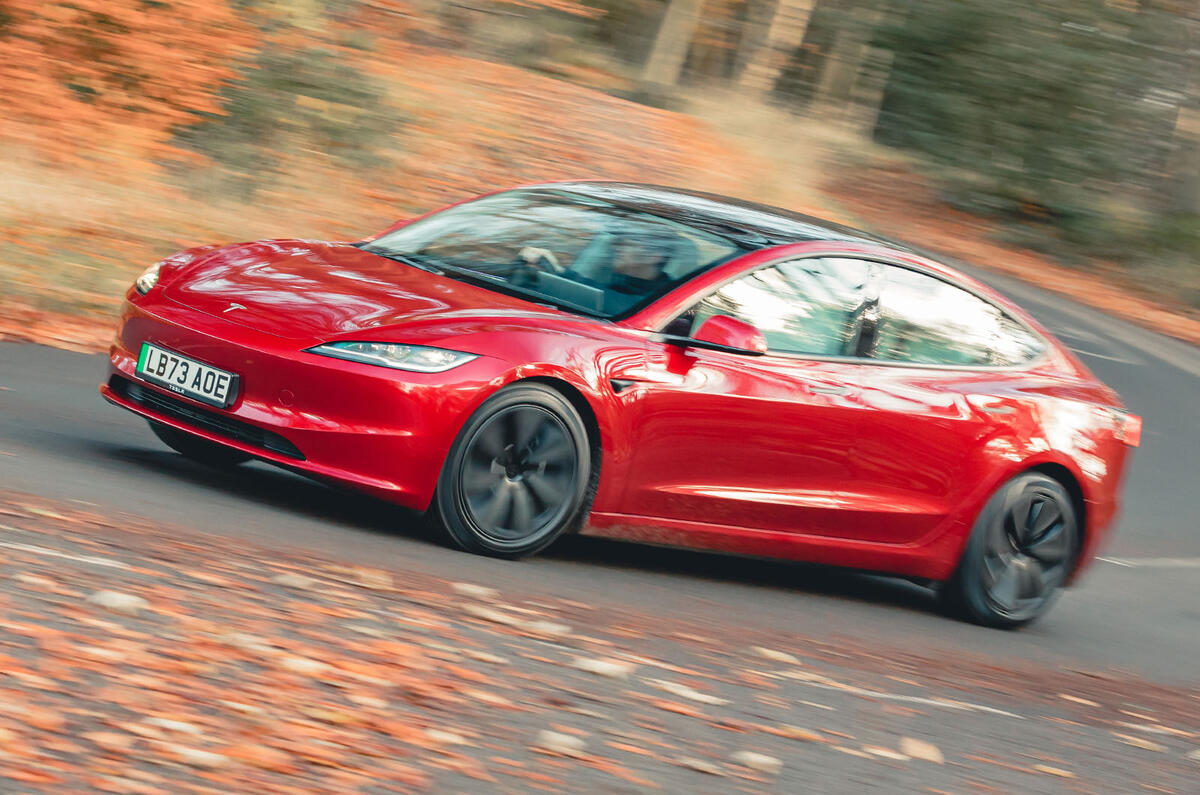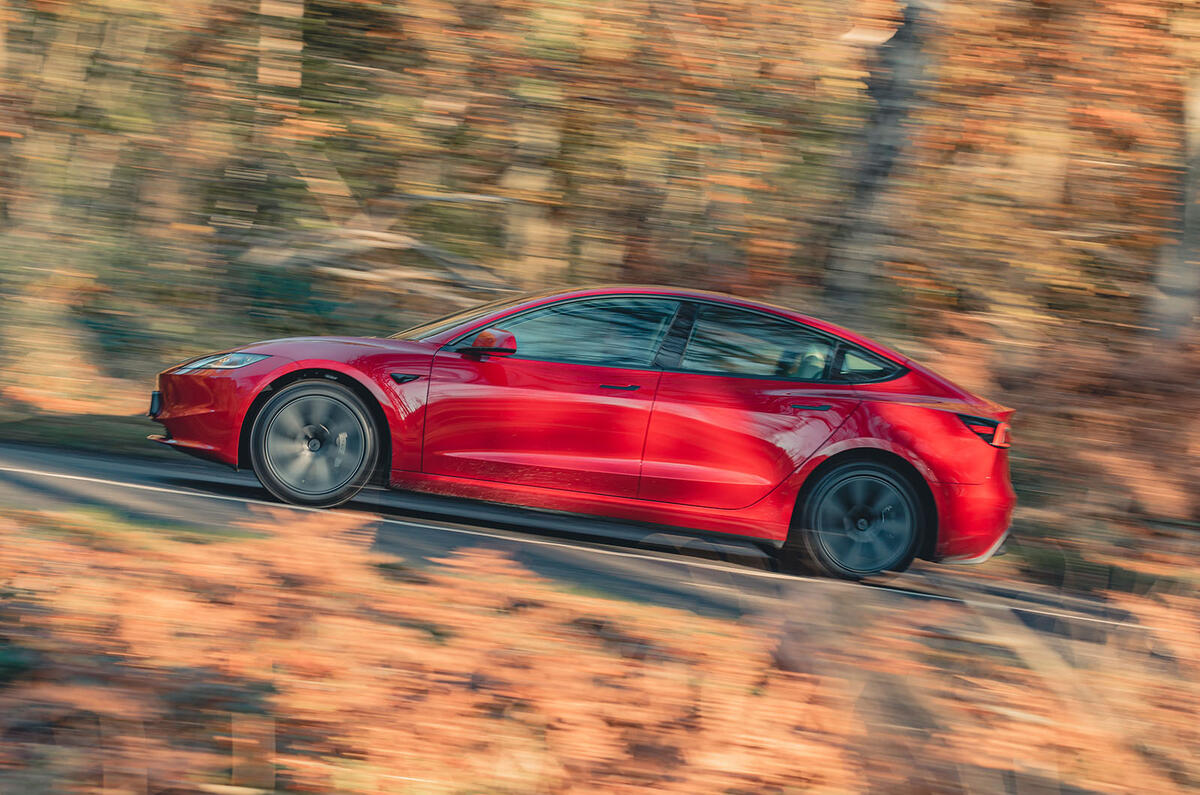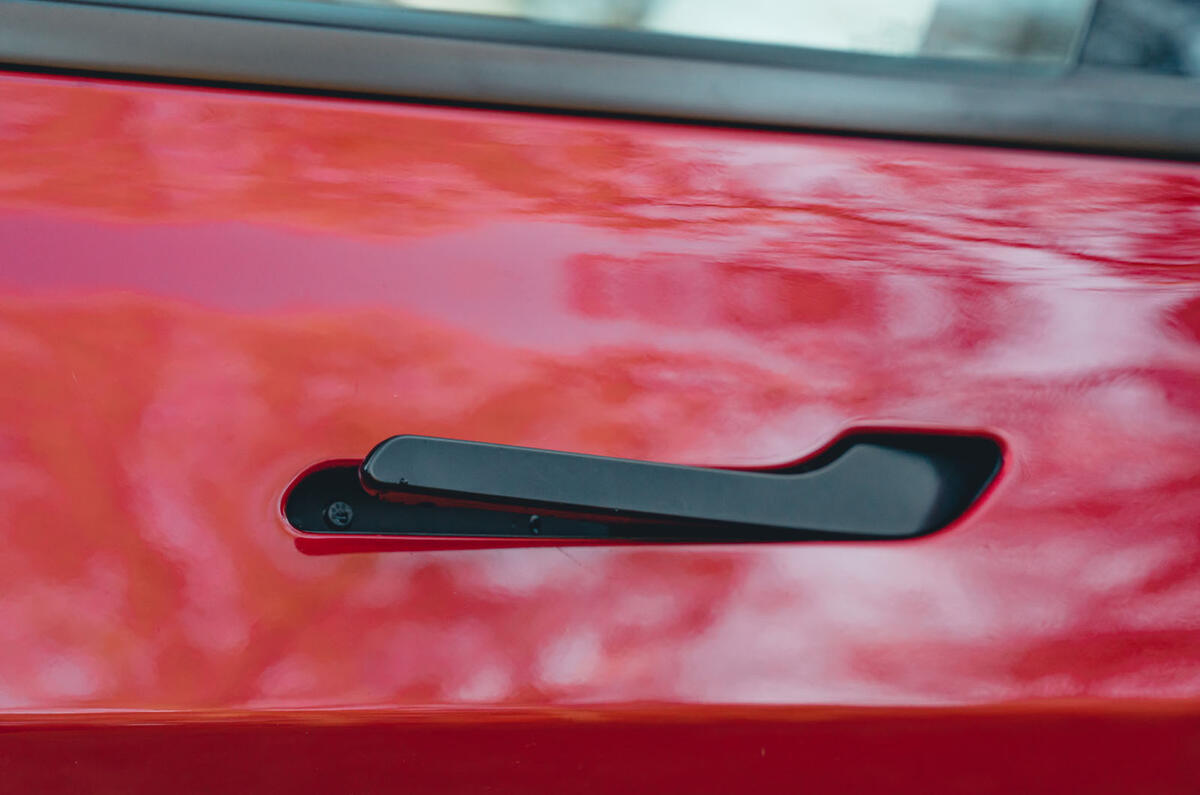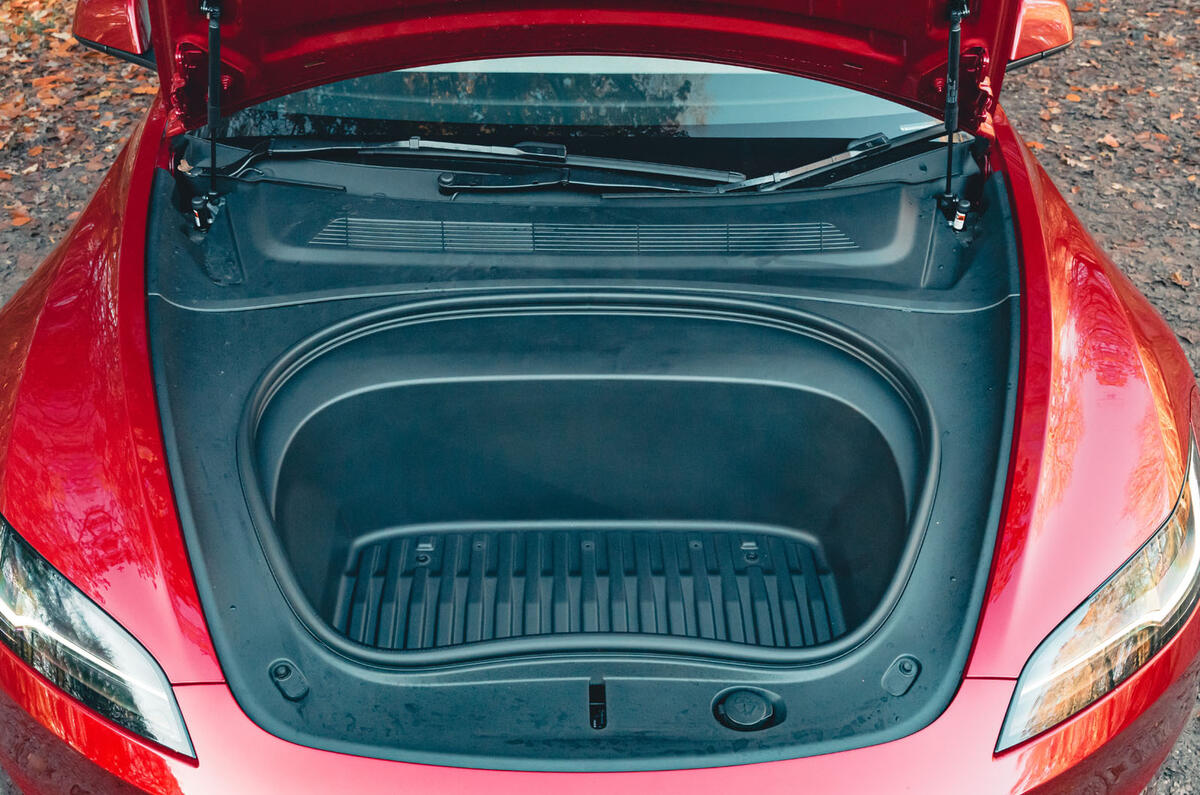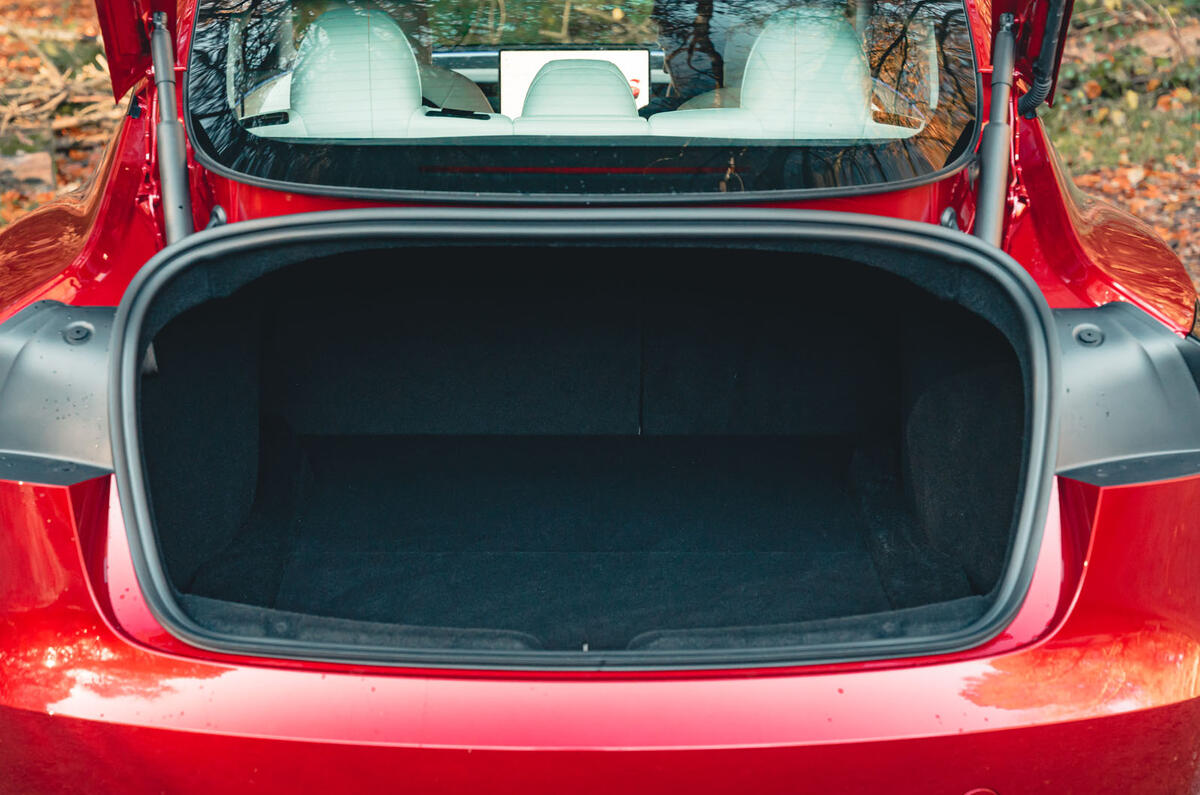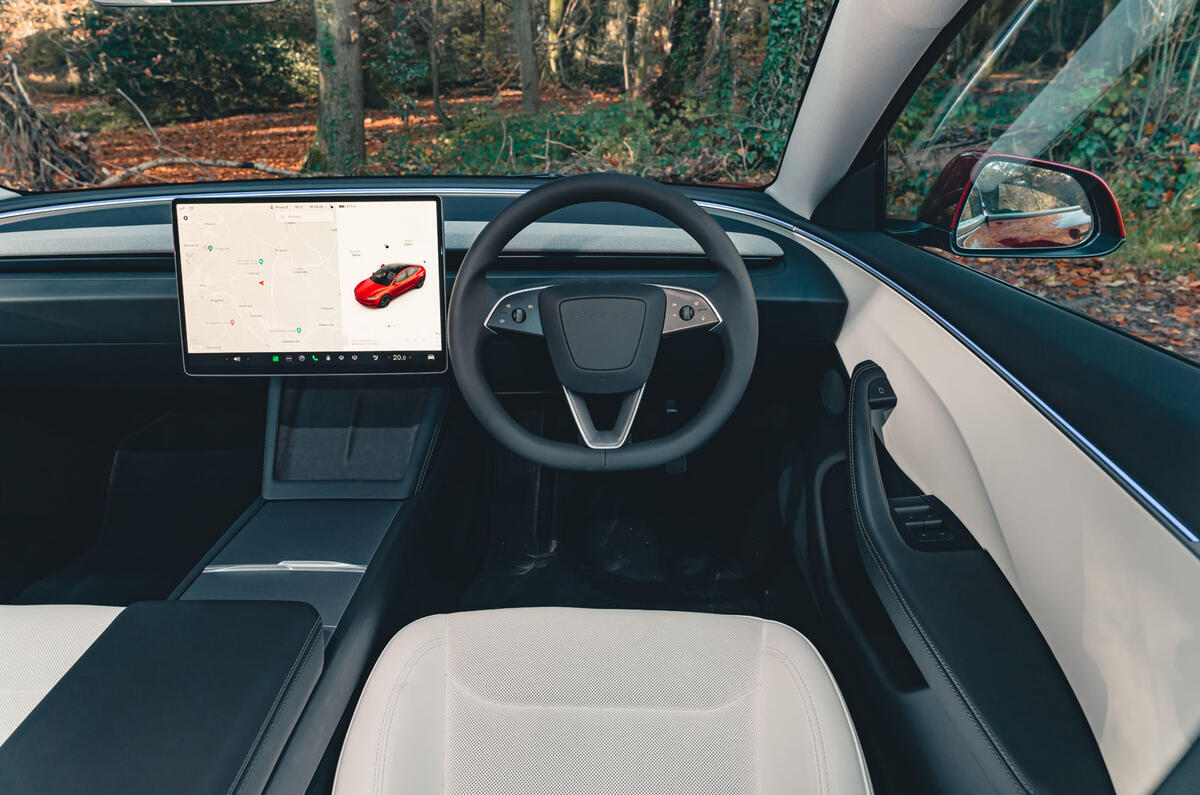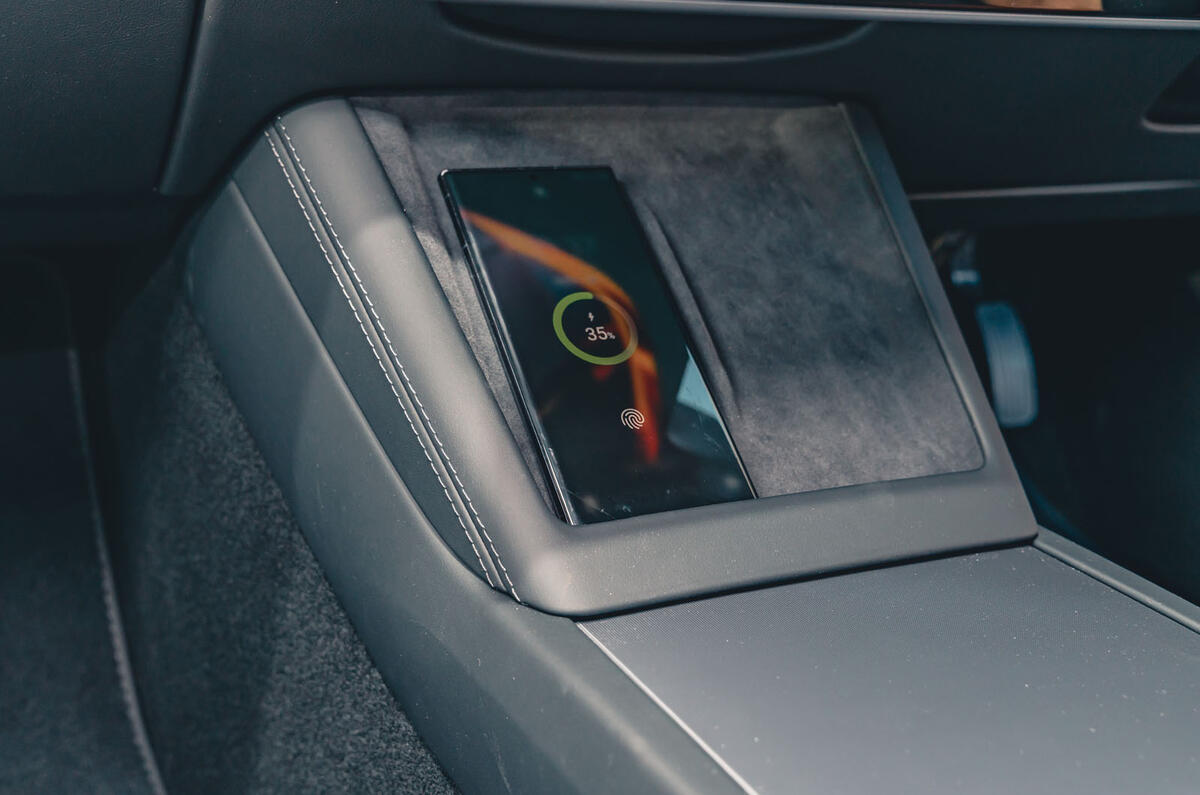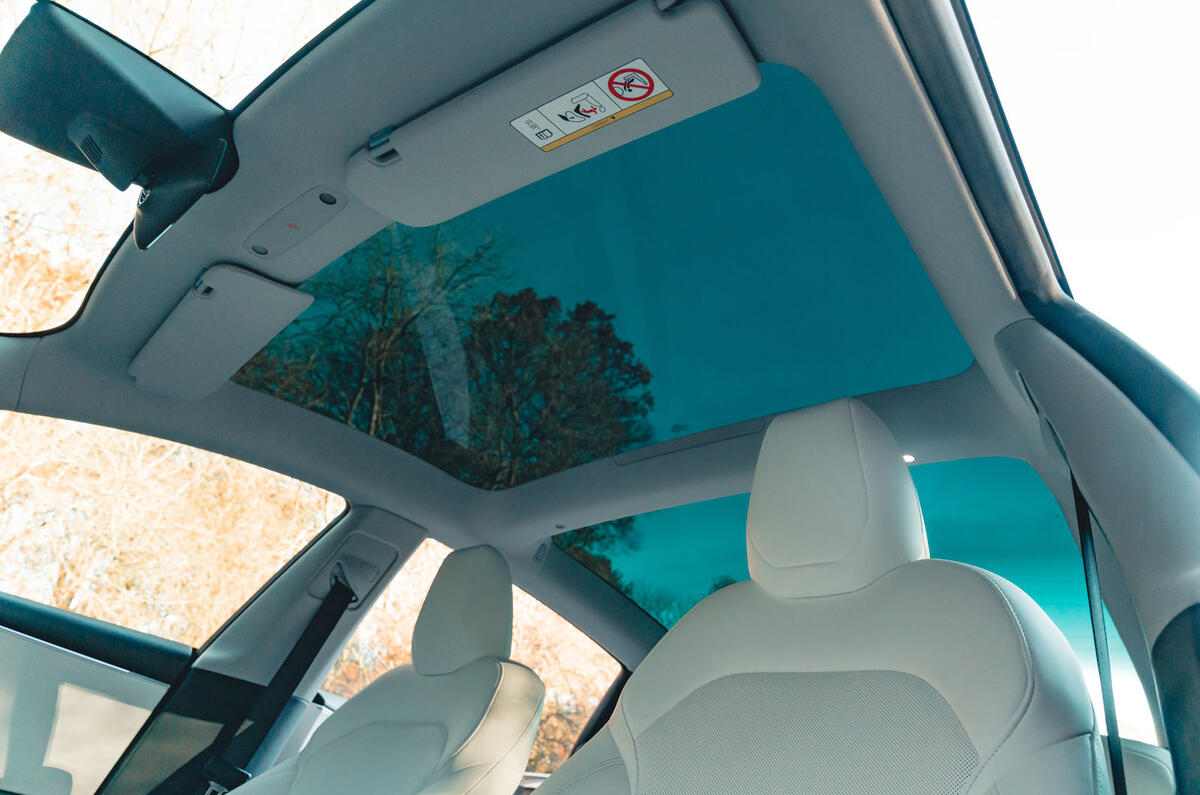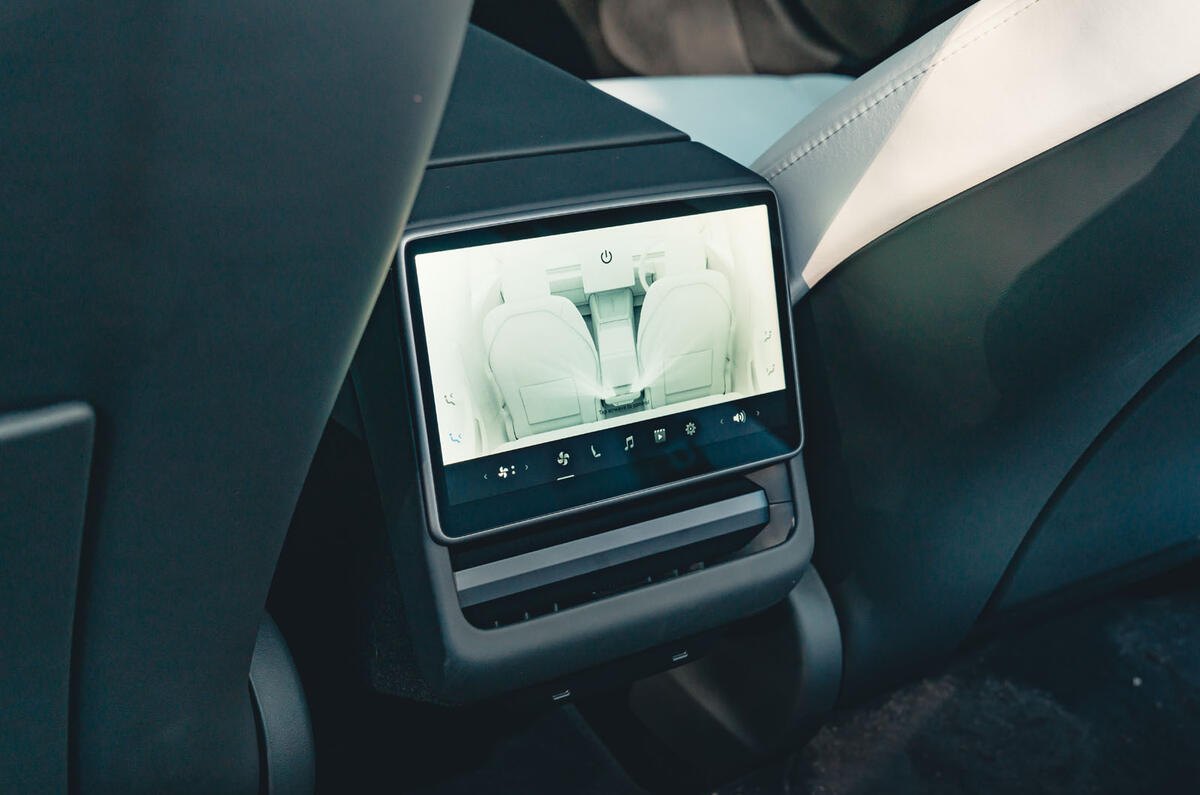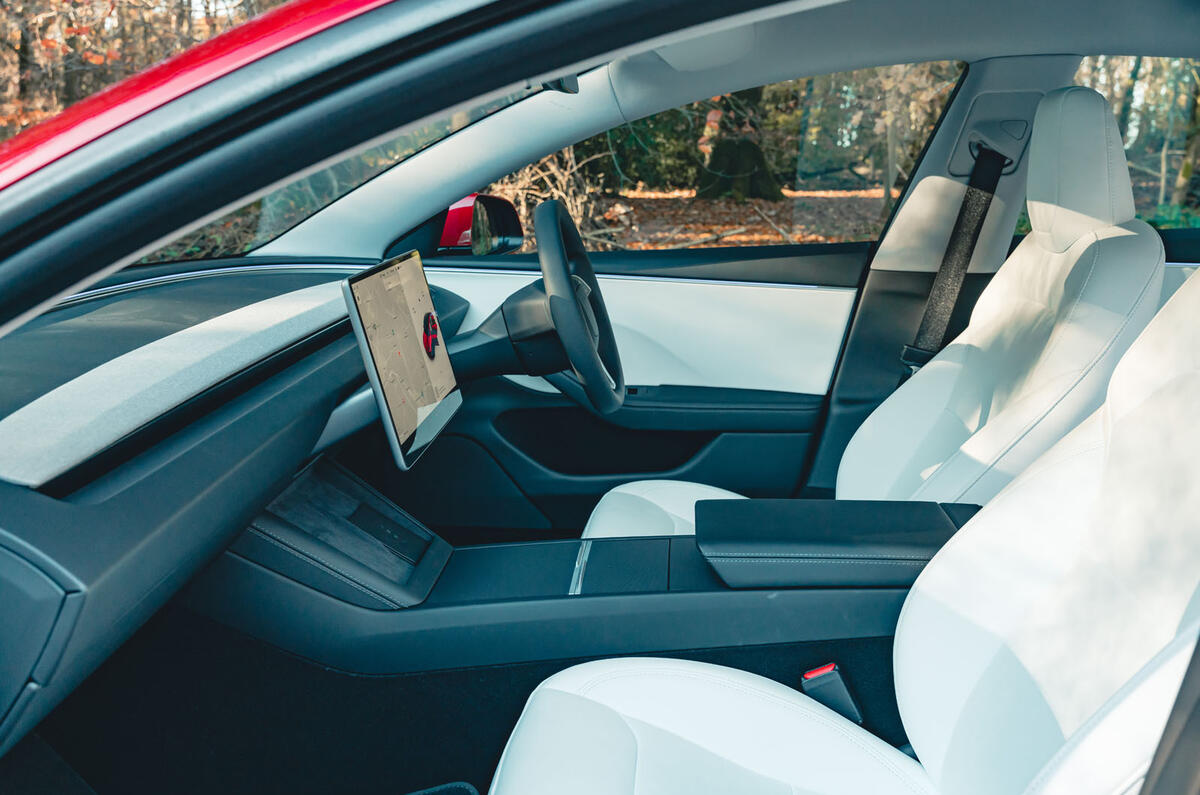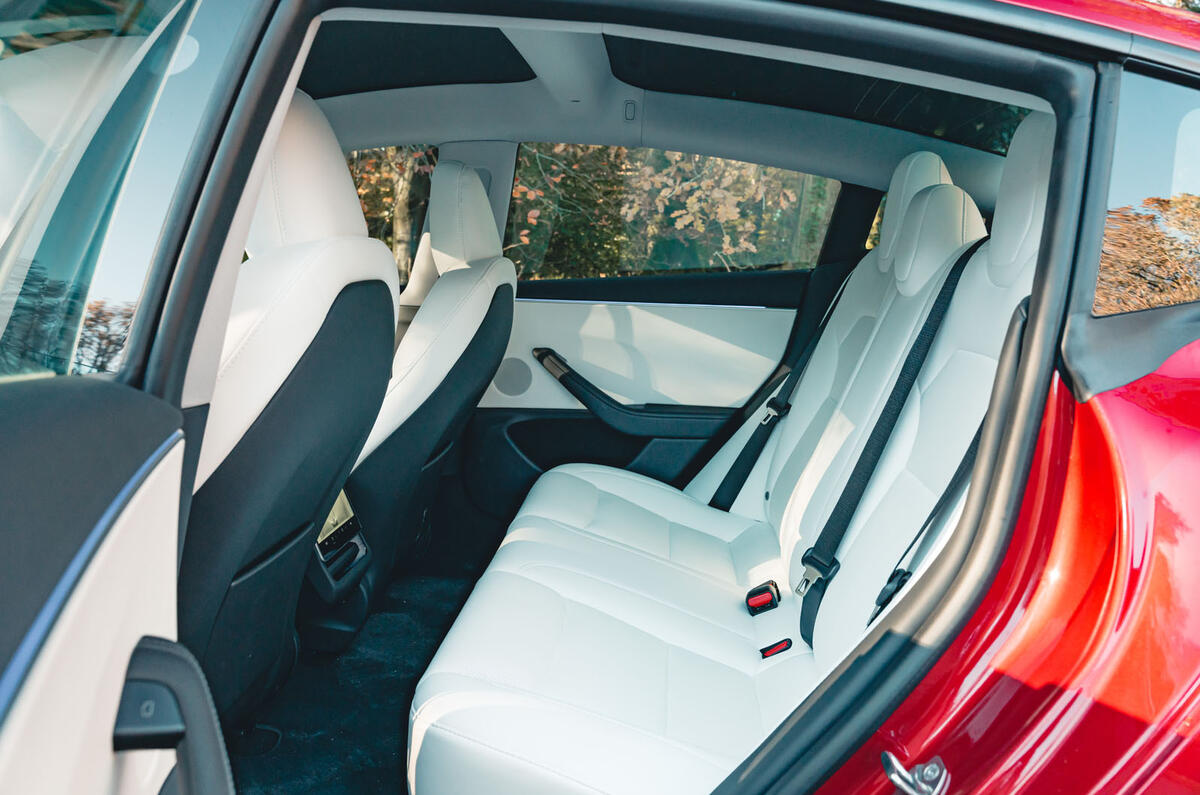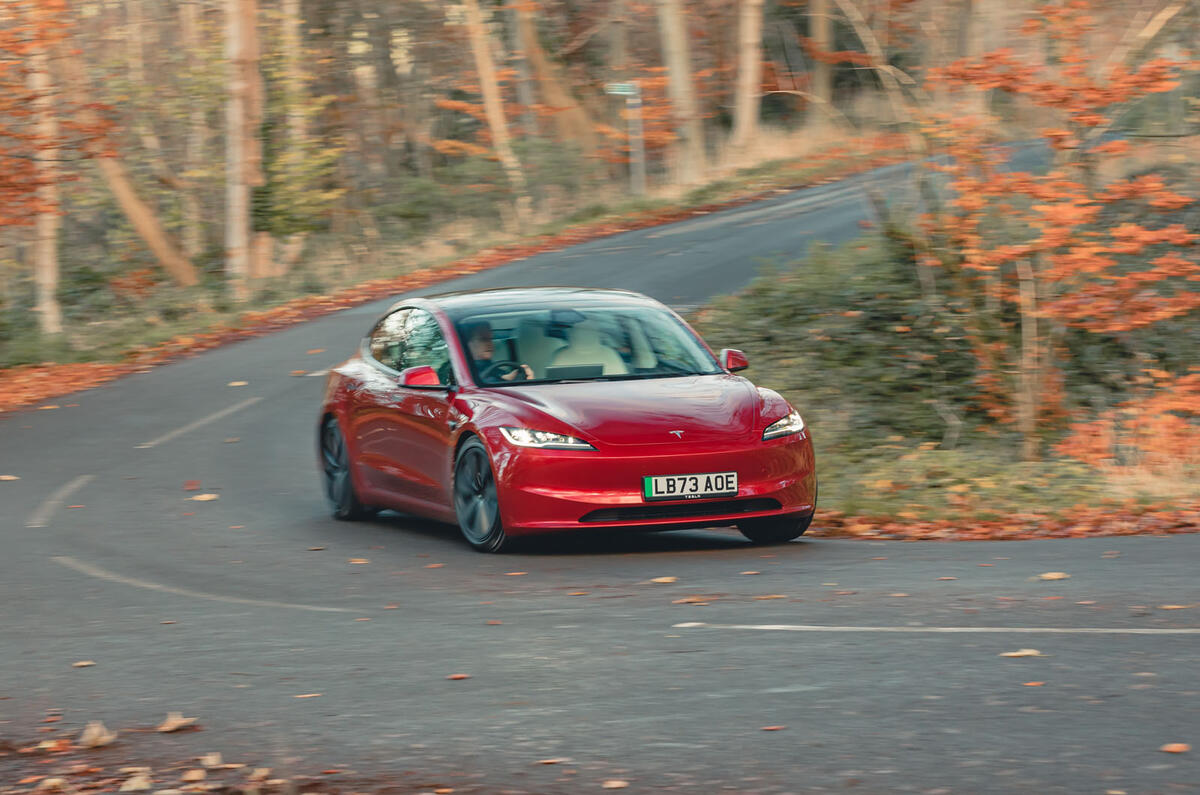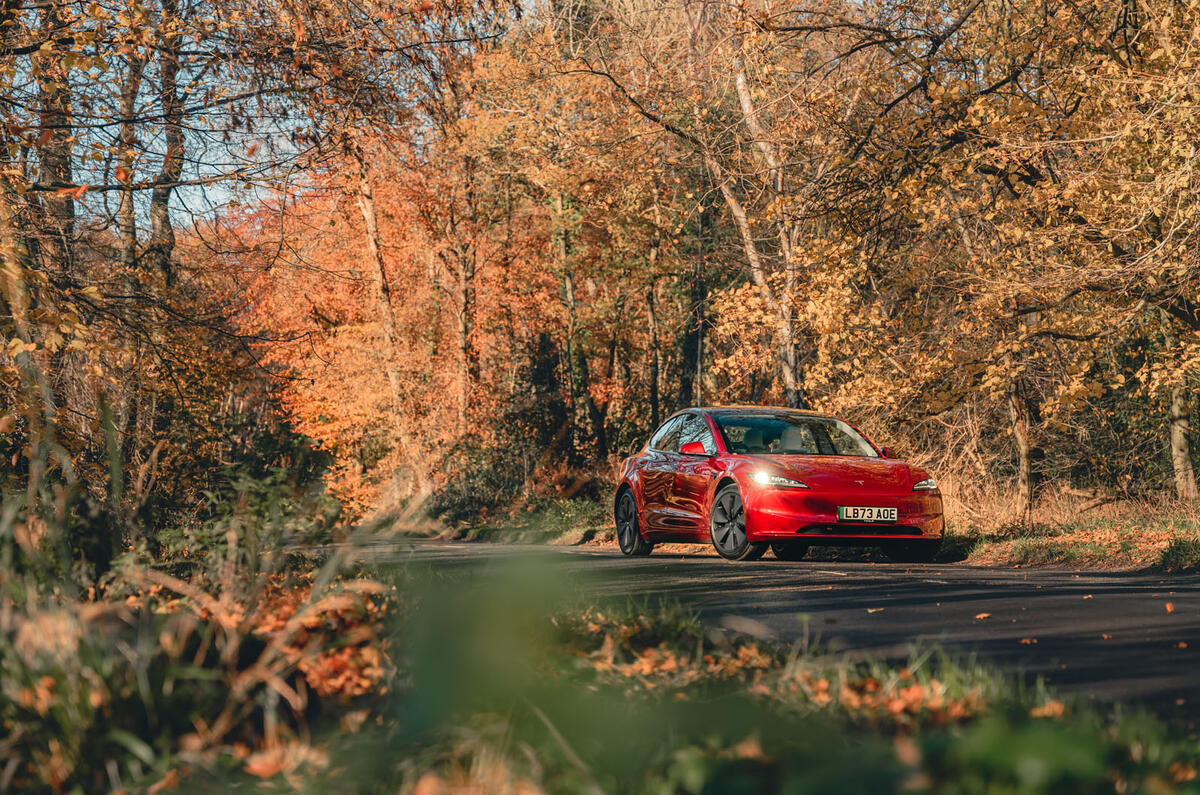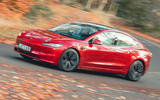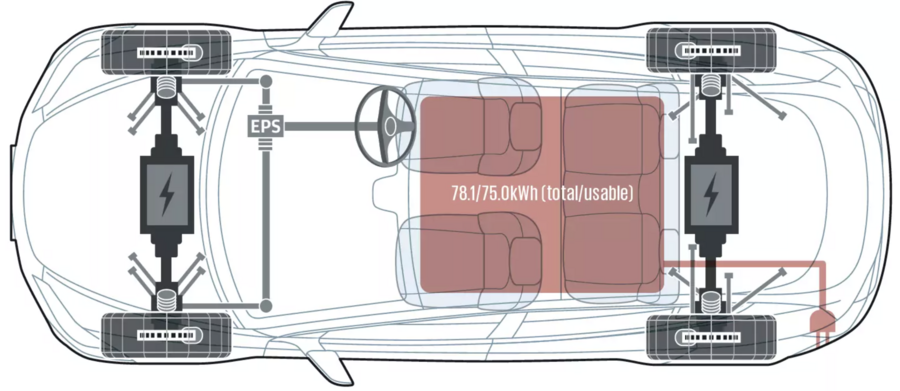For the facelift (dubbed ‘Highland’), the car’s slightly bulbous headlights have disappeared, replaced by much more piercing – if also more traditional-looking – units similar to those seen on the new Roadster, for which Tesla is taking deposits but hasn’t yet established a firm date for first deliveries.
These quickly set the updated Model 3 apart from the pre-facelift car and sit above a resculpted bumper now devoid of intakes or lighting. Exterior changes are otherwise limited to the new tail-lights, and overall the Model 3 remains striking more for its expansive glasshouse than creases in the metalwork.
At launch in 2017, we also commented on the car’s unusual height, but today the Tesla is about as tall as the i4 and lower than the Ioniq 6. It is also shorter than either, but splits those rivals in terms of its impressive wheelbase, which still isn’t quite as expansive as the South Korean car’s.
In 2017, every Model 3 originated from Tesla’s Fremont plant in California. These days, the cars are still built mostly in the US but many are made in Shanghai too. The construction is largely unchanged from before, with a steel body-in-white (note, the larger, pricier Model S is almost entirely aluminium), passively suspended via double wishbones at the front and five links at the back.



